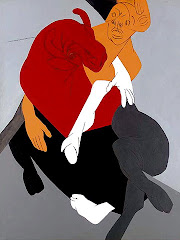The Best Way To Count Marbles: Fact And Myth
My Darling Anne,
This morning, I woke up thinking about an experiment done in some grad schools to illustrate to students an astonishing fact about human perception.
I don't know how many people besides myself have woken up thinking about that particular experiment, but I'm willing to bet I'm not the only one, because the experiment overturns many common ideas we might have about our relationship to each other and to truth.
The experiment itself is simple enough. A large jar full of marbles is placed on a table in clear view of all the students. Each student is then asked to write on a slip of paper his or her guess about how many marbles are in the jar. The slips of paper are collected and each student's guess is recorded. Then the guesses are averaged for the class as a whole. The results of this simple experiment imply something astonishing about human nature.
Here's what happens -- always happens. The average for the class is always closer to the number of marbles in the jar than any individual guess of any student in the class. Typically, the closest anyone by themselves comes to accurately guessing the number of marbles is within 5% percent of the truth. But the closest the class as a whole comes to guessing the actual number is almost always within 3% of the truth. When you're dealing with a large number of marbles, that's a significant difference. Especially because only a very few students are within 5% of the total and most are off by as much as 30%. In short, the group guess is always significantly closer to the truth than the guess of each individual.
To see why those results should astonish us, let's step back a bit.
The society we live in prizes individualism. One of our many myths about individualism is that the strong individual is self-sufficient. And while we normally think of self-sufficiency as economic and emotional self-sufficiency, we also to some extent think that strong individuals are self-sufficient when it comes to seeing the truth of things. Put differently, we are quite comfortable with the notion that truth is routinely discovered by strong and talented individuals: The scientist working alone in his or her laboratory, the sage meditating alone on his or her mountain top, the philosopher alone in his ivy tower, the artist alone in his studio. All of this is part of our common mythology.
Yet, the experiment overturns that mythology -- at least it does so as truth. In the experiment, the group is always closer to the truth than any individual, no matter how smart, strong and resourceful that individual is.
Humans are a social species. It's obvious that we are adapted to live in groups, to cooperate with each other, and so forth. The experiment -- along with many other lines of evidence -- suggests that we are also adapted to best reach the truth through a group effort. I plan to write more on this at a later time, especially if I continue to dream about that particular experiment.
What do you think Anne? Should I continue to wake up thinking about that experiment and its implications, or am I so off the mark here that I would be better off with visions of dancing girls running through my morning thoughts?
Paul






 Stumble It!
Stumble It!





No comments:
Post a Comment